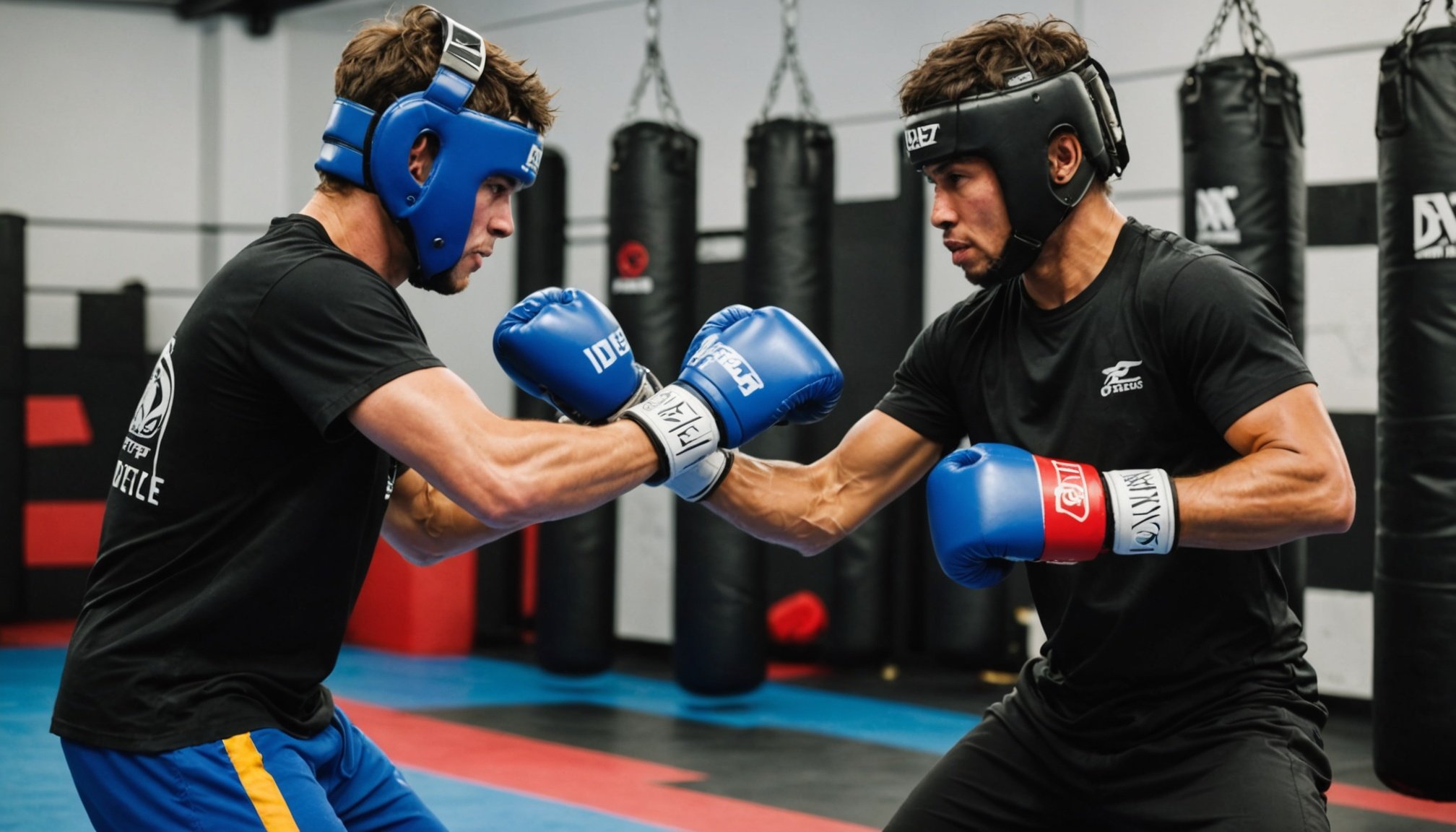Sparring partners play a pivotal role in shaping the fighting skills of both amateur and professional athletes. In the realm of martial arts and boxing, these partners serve as a bridge between training and real-life combat scenarios. As practitioners of Thai boxing, mixed martial arts, or traditional boxing, you might wonder how vital these partners truly are. In this in-depth exploration, we’ll delve into the significance of sparring partnerships and uncover how they contribute to the evolution of one’s fighting prowess. Throughout this guide, we’ll unravel the critical elements that make sparring indispensable in the world of martial arts.
Enhancing Skills Through Realistic Practice
Practicing in isolation can only take you so far. The presence of a sparring partner can bring your training sessions to life, allowing you to experience realistic combat situations.
Have you seen this : What are the fundamental principles of effective counter-attacking in boxing?
Sparring offers a unique opportunity to gauge your skills under pressure. This form of training is not just about throwing punches or kicks; it’s about understanding the nuances of timing, distance, and rhythm. When you engage with a partner, you learn to anticipate movements and adapt your strategies accordingly, honing your reflexes in the process.
Moreover, sparring helps identify weaknesses in your style. A good partner will challenge your techniques, testing the limits of your defensive and offensive skills. These sessions are a safe environment where you can experiment with new strategies without fear of consequences. Boxers and martial artists often cite sparring as the crucible where their skills are truly forged.
Also to read : How can fighters balance their training regimen with personal life commitments?
Another layer of depth is added through sparring by enhancing mental fortitude. Engaging with different partners helps build resilience and confidence, traits necessary for any successful fighter. Each partner brings a new challenge, forcing you to innovate and improvise. This aspect of sparring makes it a dynamic process, ensuring that your development is continuous and well-rounded. Ultimately, sparring is not just about physical prowess but also about preparing the mind for high-pressure situations.
Building Synergy and Trust with Your Partner
The relationship with your sparring partner is built on the principles of trust and synergy. This partnership is crucial for creating an environment where both parties can learn and grow.
A strong rapport allows for open communication, where feedback is exchanged freely. This feedback is invaluable as it provides insights into areas of improvement that might be overlooked during individual training. Constructive criticism from a trusted partner can help refine techniques and encourage a deeper understanding of one’s fighting style.
A good sparring partner understands the balance between pushing you to your limits and ensuring safety. They know when to accelerate the pace and when to ease off, allowing you to experiment without unnecessary risk. This balance is essential in preventing injuries and ensuring that both partners remain motivated and enthusiastic about their training.
In martial arts like Thai boxing, where sparring is particularly intense, the element of trust is even more pronounced. As partners, you learn to read each other’s cues and rhythms, developing a synchronized flow that enhances both your training experiences. Over time, this synergy contributes to a more intuitive fighting style, where actions become almost instinctual.
Ultimately, a great sparring partner acts as both a mirror and a mentor, reflecting your strengths and weaknesses while guiding you towards improvement. Their influence is profound, shaping not just your skills but your overall approach to martial arts.
Preparing for Competitions and Real-Life Scenarios
For many of you who aspire to compete at higher levels, the importance of sparring in preparation cannot be overstated. Whether it’s an amateur bout or a professional match, sparring partners are indispensable in bridging the gap between training drills and competitive fighting.
Sparring simulates the adrenaline and unpredictability of a real fight, conditioning you to maintain composure under stress. It helps develop strategic thinking, ensuring that you remain adaptable and resourceful, regardless of the opponent’s style or tactics. This exposure to different fighting styles enhances your adaptability and prepares you for the myriad challenges competitions might present.
Moreover, sparring helps in building endurance and stamina. By engaging in consecutive rounds with varying levels of intensity, you condition your body to cope with prolonged periods of exertion. This is crucial, especially in sports like boxing and Thai boxing, where stamina can often be the deciding factor between victory and defeat.
In addition to preparing for formal competitions, sparring equips you with the skills needed for real-world confrontations. In situations that demand self-defense, the reflexes, confidence, and tactical awareness developed through sparring can be life-saving. You learn to assess threats quickly, make split-second decisions, and execute techniques effectively.
In essence, sparring is a powerful tool that blurs the lines between practice and reality, ensuring that you are well-prepared for both competitive arenas and everyday situations that require defensive skills.
Finding the Right Sparring Partner
Identifying a suitable sparring partner is integral to enhancing your training experience. The key is to find someone who complements your skills and goals, fostering a mutually beneficial relationship.
The best sparring partners are often those who challenge you without overstepping your current capabilities. They should have a similar level of experience or slightly more advanced skills to ensure that the sessions remain productive and growth-oriented.
Communication is pivotal. A sparring partner who listens to your concerns and provides constructive feedback is invaluable. They should be willing to adapt their style to meet your training needs, whether it’s focusing on footwork, defense, or combinations.
Moreover, it’s essential to consider the attitude of your partner. A positive, respectful demeanor fosters a supportive atmosphere conducive to learning. Avoid partners who prioritize competition over collaboration, as this can lead to tensions and hinder progress.
The right sparring partner is someone who aligns with your vision, pushing you to become the best version of yourself. They understand the essence of sparring as a collaborative endeavor, where both parties are invested in each other’s growth. By choosing wisely, you can create a dynamic training environment that fuels not just your skills but also your passion for martial arts.
In the world of martial arts, the role of a sparring partner transcends mere practice. They are your confidants, mentors, and challengers, shaping your journey towards mastery. By engaging in sparring, you gain not only technical proficiency but also the confidence and mental acuity needed in both the ring and real-life situations.
As you progress, remember that the essence of sparring lies in mutual growth. It’s about building a synergistic relationship that encourages innovation and resilience. Choose partners who inspire you to push boundaries and explore new horizons.
In conclusion, sparring is an indispensable element of training that polishes your skills and prepares you for any combat scenario. Whether you’re a novice or a seasoned fighter, the lessons gleaned from these sessions will be instrumental in your journey to becoming a well-rounded martial artist.











